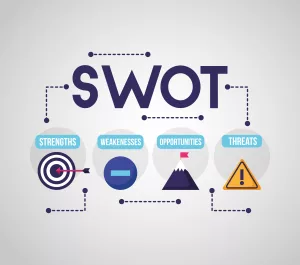Starting a volunteer program is a pivotal step for nonprofits seeking to enhance their impact. This guide provides the foundational steps and insights needed to build a thriving volunteer base, ensuring your organization’s mission is supported by a dedicated community.
A successful volunteer program relies on aligning the nonprofit’s needs with community resources through strategic planning, ensuring support for the mission and meaningful volunteer opportunities.
Identifying Needs
Conducting a needs assessment is vital for starting a volunteer program, and identifying where volunteers can best contribute by evaluating the organization’s resources and needs.
- Gathering Data: Collect information from various stakeholders, including staff, current volunteers, and community members, to gain a comprehensive view of organizational needs.
- Analyzing Opportunities: Identify tasks that volunteers can perform effectively, such as event support, administrative assistance, or program delivery, ensuring these opportunities align with organizational goals and volunteer interests.
Setting Clear, Measurable Goals
Once the needs are identified, setting clear, measurable goals for the volunteer program is essential. These goals should not only reflect the organization’s immediate needs but also its long-term vision. Well-defined goals guide the development and implementation of the volunteer program, providing a benchmark for success.
- Specificity: Goals should be specific, outlining what the program aims to achieve in a defined timeframe.
- Measurability: Incorporate quantifiable metrics to track progress, such as the number of volunteers recruited, hours contributed, or specific project outcomes.
- Alignment: Ensure that the goals align with the overall mission and objectives of the organization, enhancing its capacity to serve the community.
Developing Volunteer Roles and Program Structure
Designing the volunteer program involves defining the roles and activities that volunteers will undertake. This step is crucial for matching volunteer skills and interests with organizational needs, creating a productive and fulfilling experience for both parties.
- Role Definition: Clearly define each volunteer role, including tasks, responsibilities, and any required qualifications or skills. This clarity helps in recruiting the right volunteers for each position.
- Flexibility and Diversity: Offer a range of volunteer opportunities that cater to different skills, interests, and availability, allowing for a more inclusive and versatile volunteer base.
Hiring and Onboarding Strategy
The success of a volunteer program is deeply intertwined with its hiring & onboarding strategy. That ensures that volunteers are not only well-prepared, but also motivated and aligned with the organization’s mission.
Recruitment Strategy
In today’s digital age, social media platforms are invaluable tools for reaching potential volunteers. These platforms allow organizations to showcase their work, highlight volunteer opportunities, and engage with a broad audience. A successful social media recruitment strategy involves:
- Regular Posting: Share updates, success stories, and volunteer testimonials to keep your audience engaged and informed about how they can contribute.
- Targeted Campaigns: Use targeted ads and posts to reach individuals interested in specific causes or volunteering opportunities.
- Engagement: Encourage followers to share your posts and volunteer opportunities within their networks, increasing your reach.
Community outreach involves connecting with potential volunteers through local events, schools, and community centers. This approach allows organizations to engage with the community directly, building relationships and raising awareness about their cause.
- Events and Fairs: Participate in community events and volunteer fairs to showcase your organization and connect with potential volunteers.
- Partnerships: Collaborate with local businesses, schools, and other organizations to tap into their networks and find volunteers.
The Importance of Clear Communication
Clear communication is crucial in attracting and retaining motivated volunteers. This involves being transparent about the organization’s goals, the volunteer roles available, and what is expected of volunteers.
- Role Descriptions: Provide detailed descriptions of volunteer roles, including the skills required, the time commitment, and the impact of their work.
- Benefits: Highlight the benefits of volunteering, such as skill development, community impact, and the opportunity to connect with like-minded individuals.
- Follow-Up: Ensure timely follow-up with interested individuals, providing them with the information they need to take the next steps.
Training and Onboarding
A well-designed training program is essential for preparing volunteers to succeed in their roles. This program should include both general orientation and role-specific training.
- Orientation: The orientation session introduces volunteers to the organization, its mission, and its policies. This is also an opportunity to build a sense of community among volunteers and staff.
- Role-Specific Training: Provide detailed training for each volunteer role, covering the necessary skills, procedures, and expectations. This training can be tailored to the volunteers’ experience level and the complexity of the role.
Preparing Volunteers to Succeed
Ensuring that volunteers are well-prepared is crucial for their satisfaction and the success of the volunteer program. Well-trained volunteers are more likely to feel confident in their roles, stay committed to the organization, and make a meaningful impact.
- Support and Resources: Provide volunteers with ongoing support and access to resources they may need to perform their roles effectively.
- Feedback and Evaluation: Implement a system for providing feedback to volunteers on their performance, and offer opportunities for them to share their experiences and suggestions for improvement.
Fostering a Supportive Volunteer Environment
A positive and supportive environment not only retains volunteers but also motivates them to contribute their best. Recognition and appreciation play crucial roles in creating such an environment.
- Personalized Appreciation: Acknowledge the efforts of volunteers in personalized ways. This could range from thank-you notes to public recognition during events or through social media shoutouts.
- Recognition Events: Host regular events, such as volunteer appreciation days or awards ceremonies, to celebrate the contributions of volunteers. These events can also serve as opportunities for volunteers to connect and share their experiences.
- Incentives and Rewards: While volunteers don’t expect compensation, small tokens of appreciation, such as certificates, gifts, or professional development opportunities, can be powerful motivators.
Encouraging Feedback and Community
Building a sense of community and open lines of communication among volunteers and between volunteers and staff is essential for a supportive environment.
- Regular Check-Ins: Implement regular check-ins or meetings where volunteers can share their experiences, challenges, and suggestions. This fosters a culture of openness and collaborative problem-solving.
- Feedback Surveys: Conduct anonymous feedback surveys to gather honest opinions and suggestions from volunteers. This can provide insights into areas of improvement for the program.
- Social Gatherings and Team-Building Activities: Organize social events and team-building activities to strengthen the sense of community among volunteers. These activities can enhance teamwork and make volunteering more enjoyable.
Monitoring and Evaluating the Program
To understand the effectiveness of the volunteer program and its contribution to the organization’s mission, it’s crucial to have mechanisms in place for tracking and evaluating.
- Volunteer Hours and Activities: Utilize software or spreadsheets to track volunteer hours and the types of activities performed. This data can help quantify the contribution of volunteers to the organization.
- Impact Assessments: Develop metrics to assess the impact of volunteer efforts on the organization’s goals, such as the number of clients served, the success of events, or progress on projects. This can demonstrate the value of volunteers’ work both to the organization and the volunteers themselves.
Conclusion
A successful volunteer program hinges on continuous improvement and a supportive culture. By following the outlined strategies, nonprofits can ensure their volunteer program meets organizational goals and fosters a committed and satisfied volunteer base.



